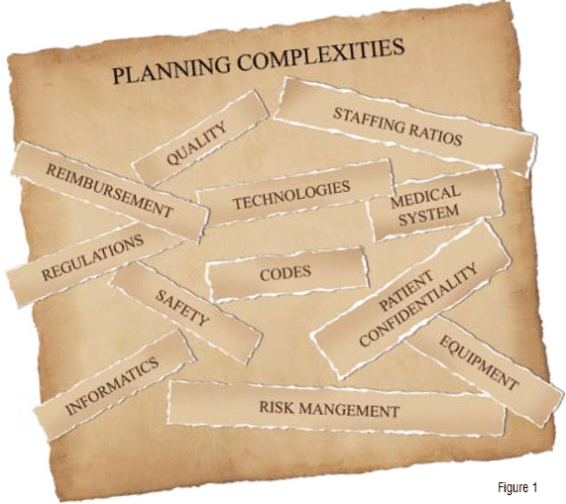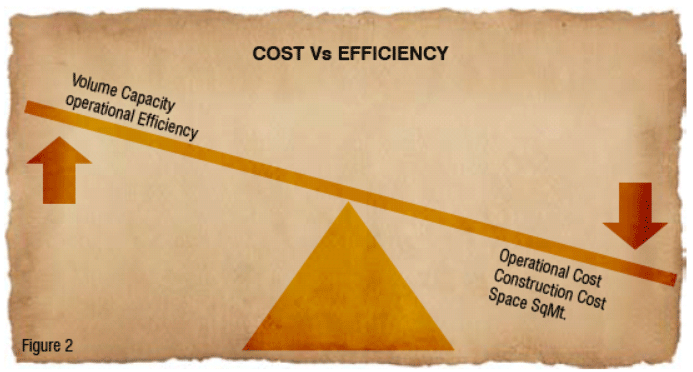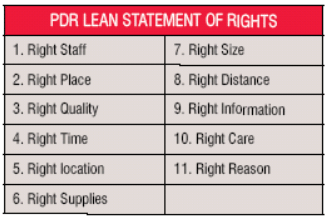
Lessons learnt from the appropriate incorporation of \"Lean\" considerations during the functional and space programming phases and then the conceptual and preliminary design phases, can positively impact immediate, short-term and long-range operational expenses.
Over the past several decades, healthcare planning and design have developed into a multi-speciality arena beyond most of any other building type. This has been mandated as a result of the increasing complexity of factors like: intertwining codes, regulations, technologies, reimbursement and insurance impacts, medical systems, informatics, equipment, staffing patient care ratios, patient confidentiality, safety, risk management and quality of care guidelines. Increasing attention has been given to rising operational costs and capital costs for new construction and renovation.
A myriad of new trends have flooded the industry with solutions to improve select foci, either service line or department-based. These have included: Centres of Excellence, Patient-Focussed Care, Family-Centred Care, Focussed Hospitals and Healing Environments. Healthcare leadership has been introduced to various approaches, such as Six Sigma, Evidence-Based Design, Sustainability and Green Buildings towards planning and design.
Terminology has expanded beyond high tech / high-touch to include: Single-Care, Same-Handed, Flexibility, Adaptability, and Modularity.

The origin of Lean and the Lean Production System is certainly credited to Toyota manufacturing developed in the early 1990s. Like no other industry, healthcare has attempted to learn from other successful enterprises. These approaches, many geared toward marketing, business development and patient satisfaction improvement, have explored the hospitality and resort industry. Lessons learned from these settings explored support services such as food service, materials management and logistics as well.
Lean Process Program Planning (LPPP) has successfully demonstrated an incredible potential for improvement in operational efficiency while incorporating a multitude of goals and objectives of many of the trends and philosophies identified above. In addition, Lean process improvement extends well beyond the planning and design process into construction and engineering and transition planning. It was observed that constructions and project costs have been reduced due to lean process improvements.
It appears that further exploration of the intent and lessons from Lean thinking may result in a winning solution for all stakeholders-Patient, Family, Physician, Staff and Leadership.
As the Lean process was developed around production, significant thought has been given to application towards healthcare, resulting in multitudes of statistics and promises for amazing improvement in operations and cycle times. New vocabularies have evolved and are now commonplace.

If healthcare leadership-the "C-Suite" (offices of CEO, COO, CFO, CIO and CNO)-becomes interested in the Lean process, merely because of the enticement of the metrics, the process will ultimately fail. Promises of 25 per cent reduction in operational costs, 50 per cent reduction in errors, and 7 per cent gains in annual revenue, 55 per cent reduction in response times, 43 per cent reduction in required FTEs per adjusted patient discharge, and 40 per cent reduction of area-are all very enticing lures. These promises are enticing especially to those individuals who formulate budgets and form Board financial expectations in a highly competitive industry. This must be emphasised to encourage and educate leadership on the true, more global values of the Lean process. While gains will be achieved in most of the areas outlined above, the actual figures may vary from one institution to another. The variables include new or extensive remodelling of facilities, the existing or proposed integration of advanced informatics systems, the plan and budget for acquisition of new technologies and medical equipment, and new organising tools for all administrative functions. Other significant variables relate to logistics, material supply and distribution systems.
A key consideration is the willingness for change, and the executive team's willingness to devote the support and financial resources for the investment of time and dollars on the long-term basis. A basic principle of Lean is the investment in the future and the understanding that this approach is not a static solution, but one that requires continuous improvement with the goal of zero defects and zero waste of time and resources.
From significant experience with Lean approaches as applied to programme, planning, and design, lessons have been learnt as to the appropriate level of detail to attain significant benefit. The principle is to remove waste in the form of time, number of steps in a process, distance travelled for each step, the number of individuals required per step in a process, and resources that may be redundant or unnecessary in the process. Examples and actual experience has shown that the majority of waste can indeed be greatly reduced or eliminated. This allows for awesome change in clear thinking of what can be achieved if these applications are incorporated throughout the facility-or as in Lean thinking-the entire enterprise.

Principle concepts include elimination of "departmental" thinking to adopt a systems approach. Standardisation of spaces, resources, equipment and supplies, as well as actual processes to the degree possible are all primary considerations. It is very important to accept that quality in all aspects must be maintained to highest potential possible. This includes elimination of risk, and promotion of safety and security as applicable in all areas.
Flexibility in the utilisation of spaces and other resources has proven to be of significant value in multiple ways. As with decrease of throughput times, these concepts can, on one hand, decrease the quantity of spaces that must be constructed-decreasing construction costs, or on the other hand, increase volume capacity which can increase return on investment by allowing for future growth while reducing operational costs.
Each facility, as well as each application of Lean Thinking, must be customised to the needs of specific owner. The development and implementation of Lean can be applied to specific functional areas, entire service or product-lines, throughout the facility or throughout the healthcare system. Of primary importance is the acceptance and support of leadership for the right reasons. Planning Decision Resources (PDR) has developed a simple tool to be utilise as a test for decision-making called the "PDR Lean Statement of Rights".
Collapsing barriers, separating healthcare operational departments is not restricted to the physical barriers of walls and corridors. The barriers are more often in the mind-preparing to accept change-for the overall good of the enterprise. Patient and family satisfaction as well as Healthcare Givers' satisfaction are the true goals of a long-range solution. These are the factors that can ultimately benefit and impact the bottom line.
From a facility planning and design perspective, Lean Thinking is not to simply reduce construction costs. It is for operational improvement, which in turn reduces operational costs, thereby improving capacity for greater return on investment. This in turn results in decreasing cost of construction. In the past too, often from unsuccessful approaches to cost maintenance, costs were cut simply through Value Engineering. Although this short-term approach fulfilled immediate needs, if failed in the event of unforeseen circumstances. The Lean process certainly considers the immediate need of responsible project cost maintenance, but in the realm of the larger long-term picture.
Continual improvement seeking ways to reduce, or even totally eliminate inventory is an incredible thought. This creates the necessity of total reliance and trust in persons or outside organisations, to meet the scheduled needs without fail. Certainly some degree of backup is required to consider emergencies or unscheduled events, but the process encourages Lean Thinking to consider and plan for how these emergency needs can be met in other ways. It considers the ways, that do not force "our" enterprise to pay the cost for excessive inventories, costs for space to house the excessive stock, personnel to clean, maintain, and inventory the excess, and then transport the inventory when needed to where needed. This is just one example of stretching the standard thinking into totally new approaches.
Opportunities abound within this new approach for programming more functional spaces that utilise less space and provide greater capacity for increased volumes. Programming net usable spaces with much tighter grossing factors for decreased wasted space for circulation is achievable. Relocating non-essential spaces outside of expensively constructed hospital or acute patient care zones, and placing these services in less expensive structures can be considered. An alternative approach is to outsource many of these functions to other vendors. This reduces cost for construction as well as the staff required to operate these functional zones.
Focus on the bottom line is not incorrect, and in fact is a necessity. Focus on the construction costs and bottom line, without considering greater long-term costs may be a risky proposition. Although long-term solutions impact operational costs, they prolong the life of the building.
The side benefits of the Lean Process Program Planning approach include exemplary team building and streamlined communications through simplified organisational and reporting structures. Focus on the "whole" while not ignoring the detail, has long-term benefit. The continual improvement and simplification of each step and process, with incorporation of improved technologies and informatics, is virtually unlimited in scope. These constant changes emphasise the need for flexibility and adaptability in space and facility planning and design. Engineering participation very early in the conceptual programming and planning stage is a necessity. New approaches in structural, electrical and mechanical systems play a significant role in accomplishing the ultimate potential of lean thinking.
Where, in the past, new emerging concepts and trends-of-the-moment had fleeting moments of excitement in the healthcare industry. The Lean approach, however, shows greater, more significant opportunity for complete integration of the broader range of ideas, encompassing the positive benefits both operationally and related to capital expenditure.